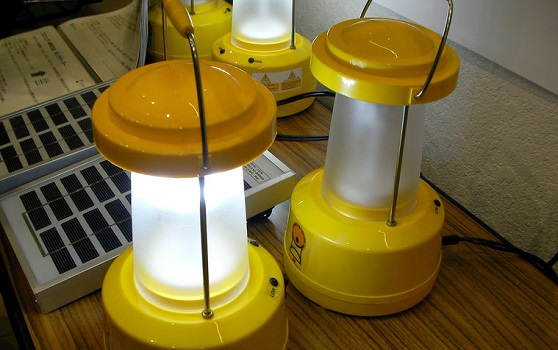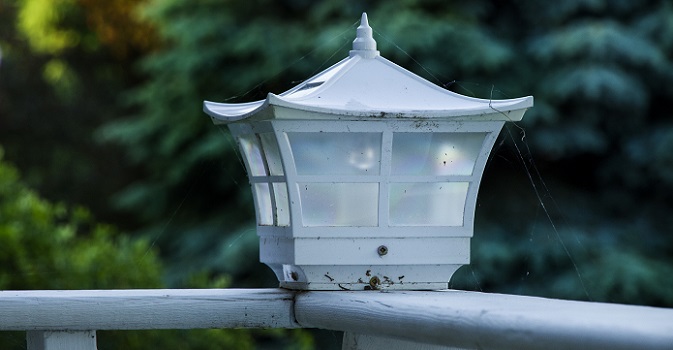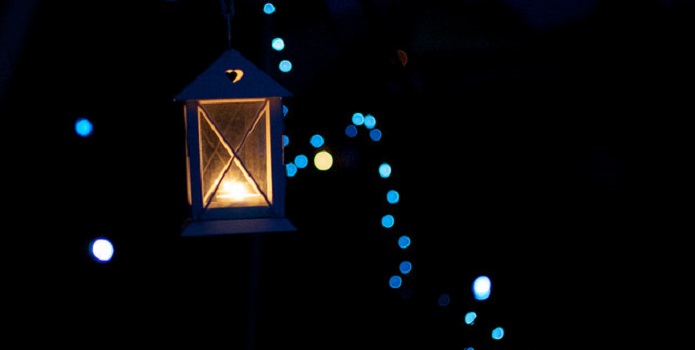Solar Lanterns: Everything You Need To Know

Whether you’re in your yard or exploring the outdoors at night, light your way using the sun!
We know that we can harness energy from the sun to power our homes. But what about using solar power in other environments? As solar energy becomes a more widely used resource, its uses have expanded. I’ve seen solar-powered water heaters and even solar powered street lights! Today we are going to look at the ease and convenience of solar powered lights, specifically solar lanterns.
Solar lanterns are an economical, convenient way to brighten an area, whether you are camping in the wilderness or just going out in the backyard. We’ll go over some pros and cons, and recommend a few quality solar lanterns for your outdoor needs.
Why choose solar lanterns?
 Who doesn’t love to spend time in the great outdoors? It’s always nice to enjoy the open air and mother nature’s beauty. But what do we do after all the sunlight has disappeared? If you like the idea of saving a buck on batteries or fuel, then a solar lantern is just what you need!
Who doesn’t love to spend time in the great outdoors? It’s always nice to enjoy the open air and mother nature’s beauty. But what do we do after all the sunlight has disappeared? If you like the idea of saving a buck on batteries or fuel, then a solar lantern is just what you need!
When camping even just a few years ago, keeping things bright after nightfall was a challenge. Campers could stoke a good old fashioned campfire or use gas lanterns to maintain visibility, but as far as convenience and safety are concerned, these two light sources score pretty low. Then came battery-powered lanterns and you could suddenly bring light into your tent! But even battery-powered lanterns have their downsides – they can be heavy and if your batteries die while out in the woods, you’ll be living in darkness if you didn’t bring any spares!
Thankfully today, lanterns have come a long way and we’ve got even better options thanks to LEDs and efficient compact solar panels. With no gas and no batteries to replace, today’s solar lighting for outdoor activities and camping is more efficient and environmentally friendly than ever before!
Solar-powered lanterns offer a host of benefits over fuel-burning or battery-powered lanterns:
Exhaust free. Traditional gas-powered lanterns run on liquid-fuel (propane or butane), which are created from fossil fuels and generate damaging pollutants into the air. If you camp a lot, replacement fuel can get quite expensive as well.
Silent. While many people love the crackling sound of a fire, battery- or solar-powered lanterns are nice and quiet – allowing you to enjoy the sounds of nature around you.
Low heat = safer! Gas-powered lanterns are inherently dangerous, since gas is combustible (duh). When producing light, they also produce a lot of heat as a byproduct, so you need to be very careful where you place your lanterns (away from additional fuel tanks and your tent, for example!) Solar lanterns, on the other hand, typically use LED lights, which do not generate nearly as much heat and are much safer.
Relatively light-weight. Fuel-burning lanterns are usually heavier and bulkier than solar lanterns. Additionally, battery-powered lanterns require D-cell batteries (this one needs 8!), which can add a lot of weight to your camping backpack.
Can recharge remotely. This is the biggest selling point for solar-powered lanterns. You don’t need to worry about bringing additional fuel or batteries – just set your lantern in the sun! Some solar lanterns require as little as one hour to become charged. While charge time varies depending on the product and the strength of the sun, they sure are a lot more convenient than hand-cranking lanterns and cheaper than their fuel-powered counterparts.
A few drawbacks
There are a few aspects in which solar lanterns fall behind more conventional lantern choices. One of those is their lumens count. Lanterns are measured in terms of their lumens, or how much light and brightness a light source emits. The higher the lumens, the wider the area that is lit. Fuel-burning lanterns beat out out all others in this category, generally creating more light than electric, solar, candle, and hand-crank models.
Similarly, the number of hours a camping lantern can run varies depending on the type. In this regard, battery-run lanterns usually have longer running times compared to their solar-powered and hand-crank counterparts.
One last issue is access to sunlight. If your solar lantern doesn’t have any type of battery backup and you can’t get enough sunlight (either due to weather conditions or a shady location) to charge it properly, you may end up in the dark!
Top selling solar lanterns
Solar lanterns range from $5 to $30 depending on the brand, size, and lumens of the product. Most solar lanterns though are compact, provide nice ambient light (no spotlights) and cost around $10 to $20. Below are a few of consumers’ favorite solar lanterns.
- This collapsible camping lantern by Browon Company is a popular choice among Amazon shoppers. Weighing in at less than one pound, it offers 5 hours of light from as little as one hour of solar charge time. It’s got LED lightbulbs, and includes a backup battery compartment as well as a USB charger in case of emergency.
- This pocket-sized solar lantern by Bigfoot Outdoor Products offers three different lighting modes: 25 lumens, 65 lumens, and an SOS mode for emergencies. It boasts 10 hours of light and also has a USB charger as a backup. Best part is, it weight less than half a pound and can fit in your pocket!
- The Luci Outdoor Inflatable Solar Light by MPOWERD is a great option for someone wanting to brighten up any activity. It’s fully waterproof as well as inflatable and collapsible. It weighs just .25 pounds and can be easily connected to your backpack or stowed in a pocket. It offers 10 white LED lights in three settings, which can be powered for 12 hours if left in the sun for 7 hours. No backup power mode is available on this model.
Hopefully now you have a better idea of which components you should consider when shopping for a solar-powered lantern. Whether you are going out for a week in the great outdoors or just looking for a night light to put in your yard, there are a host of options that can offer you strong, steady, light powered by natural energy.
If you’re interested in expanding your outdoor solar lighting, read our piece on The Best Solar Lights for Outdoor Use.
Which solar lantern are you going to try, or do you already have one you love? Leave us your recommendations in the comments below!


